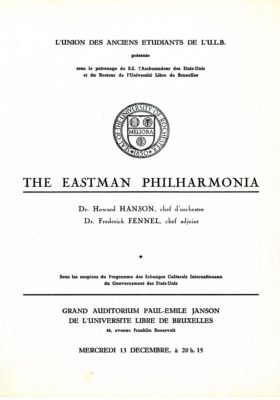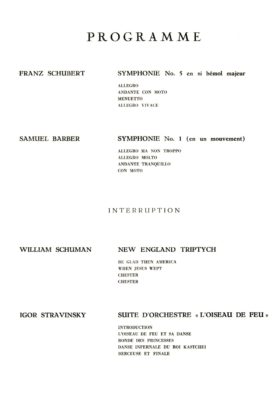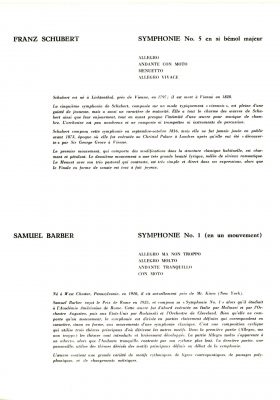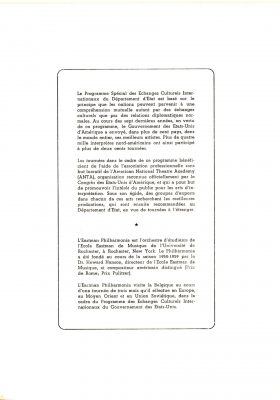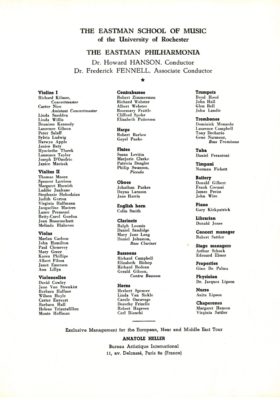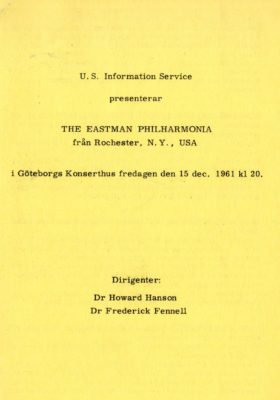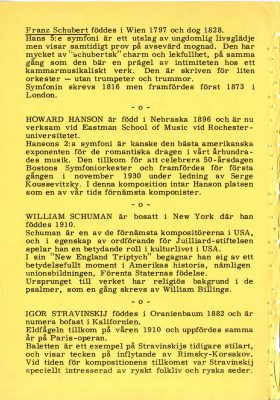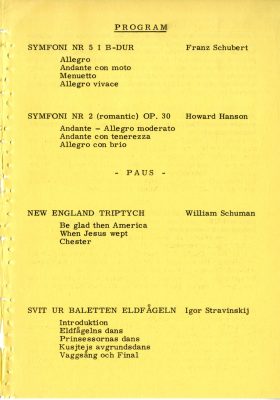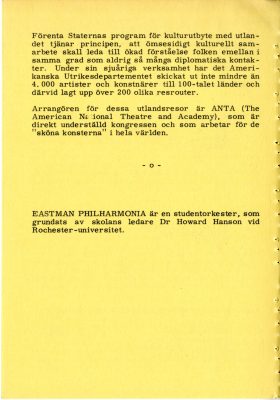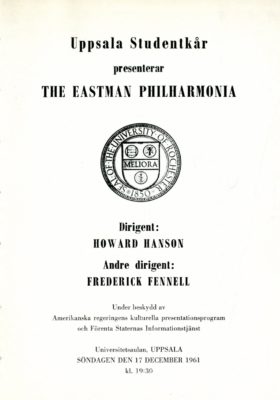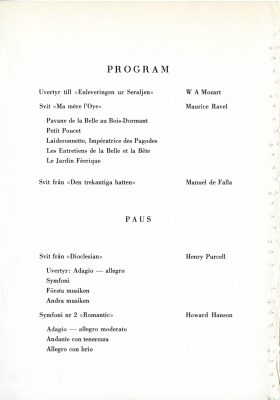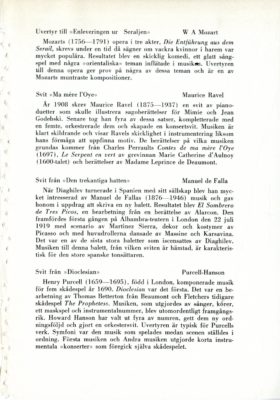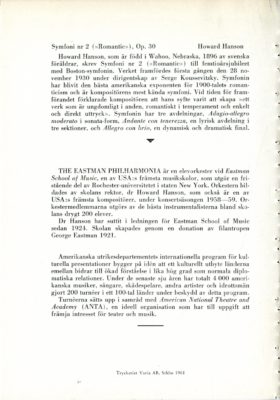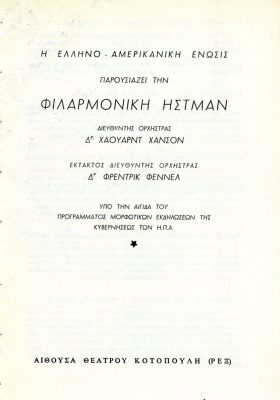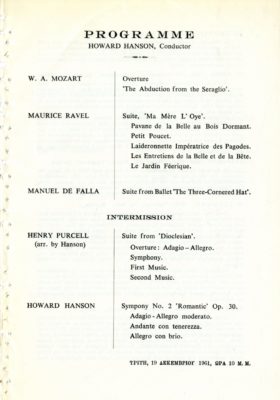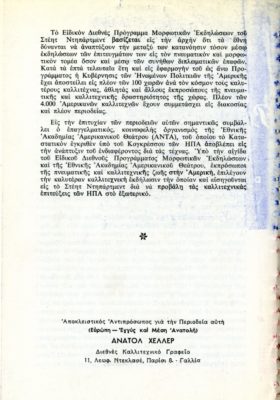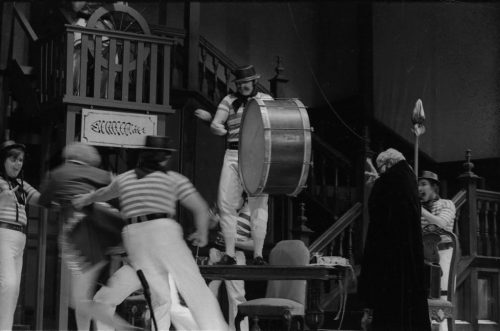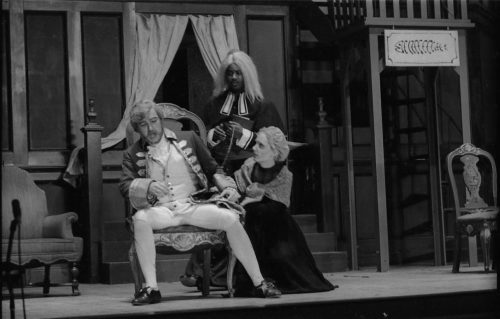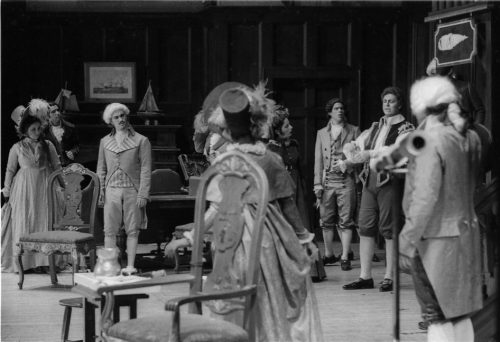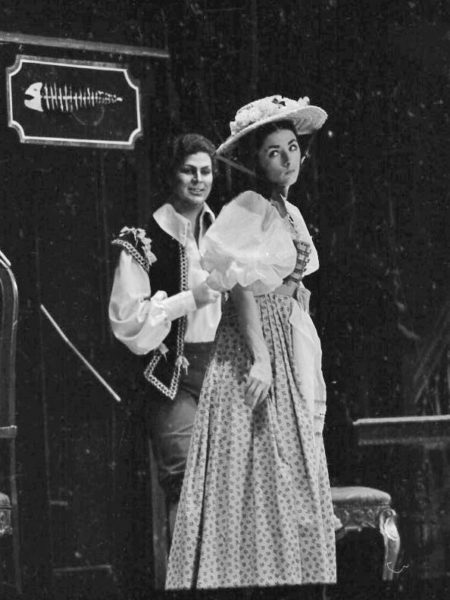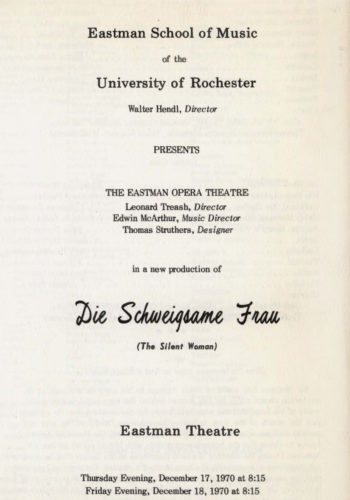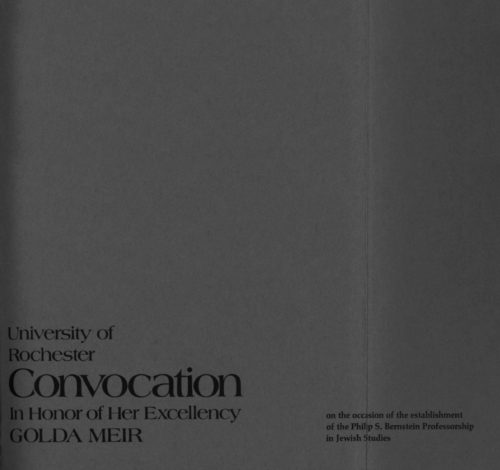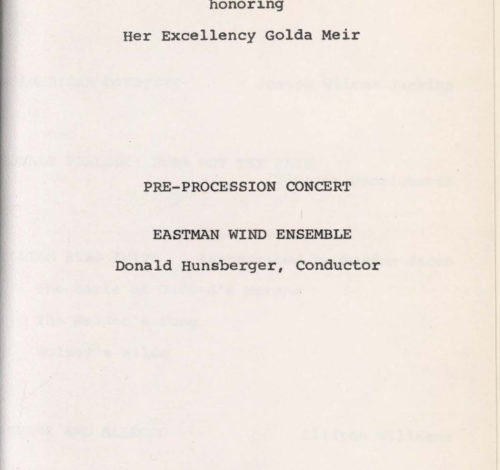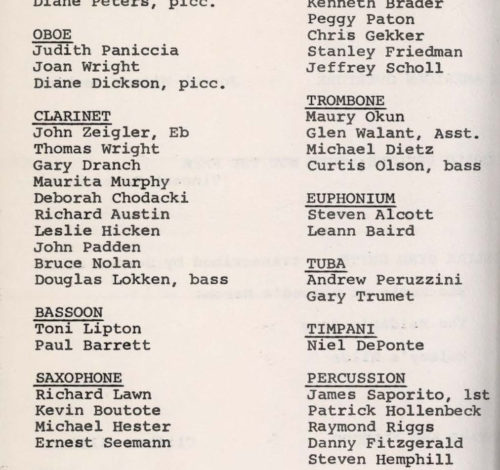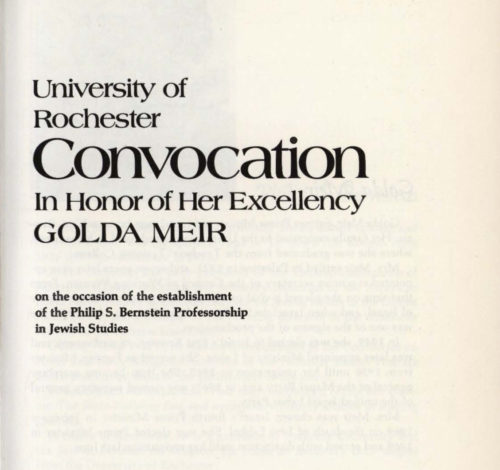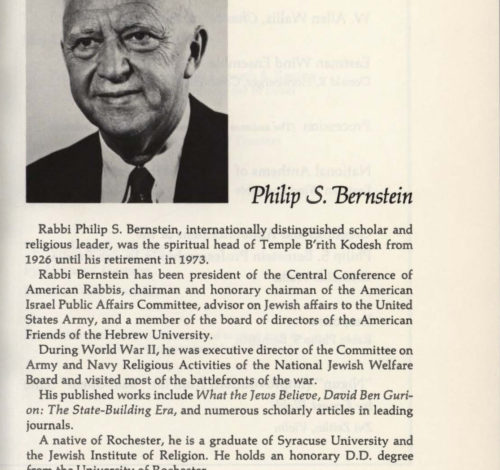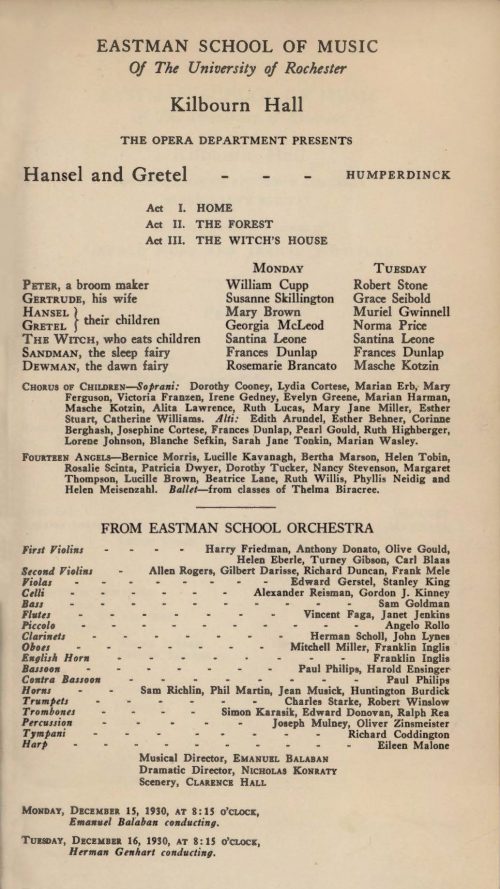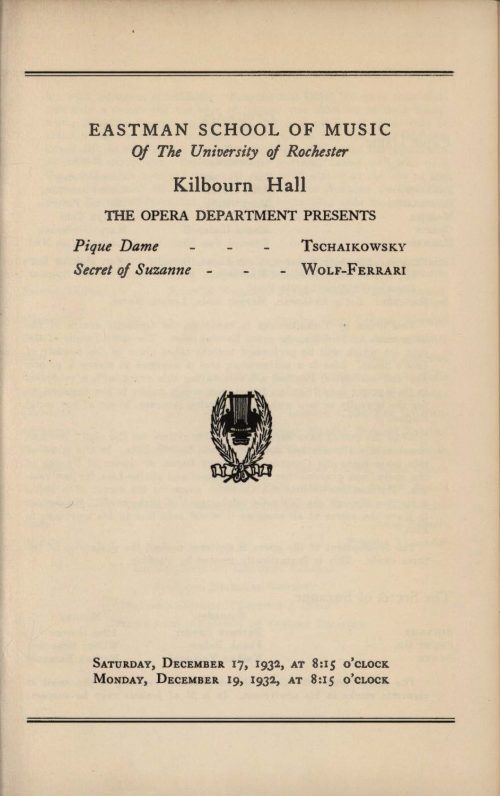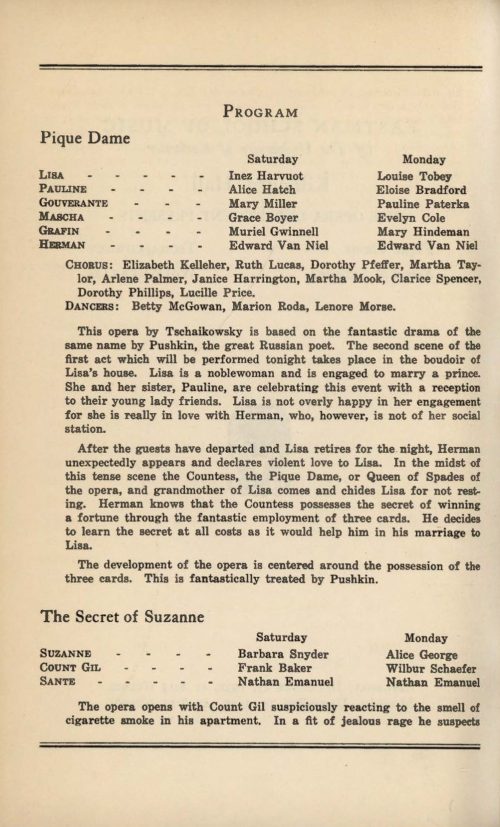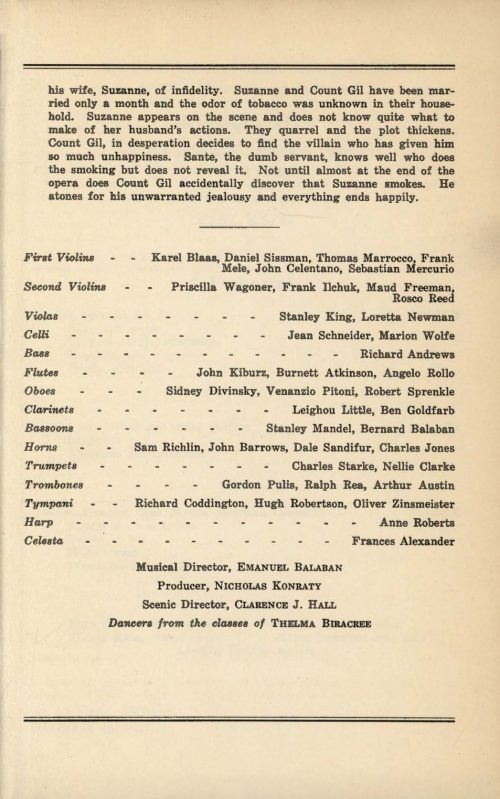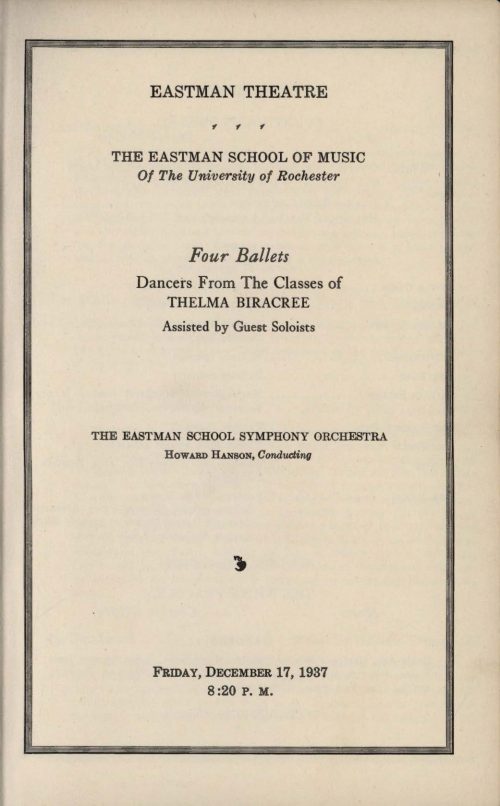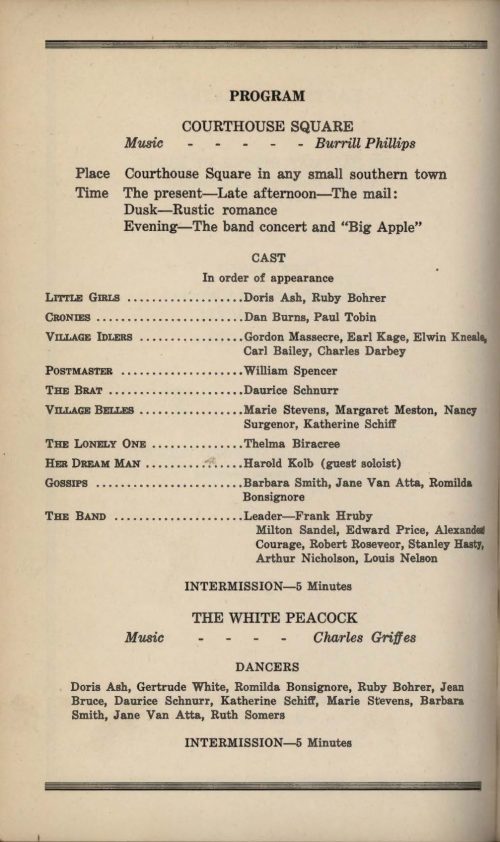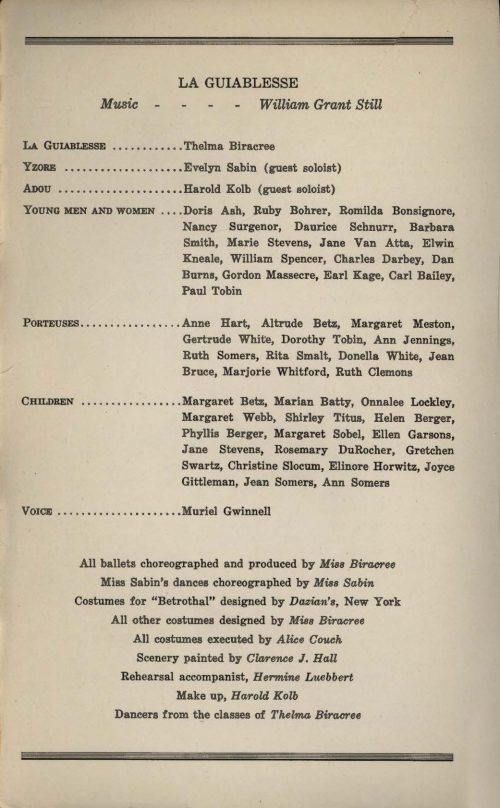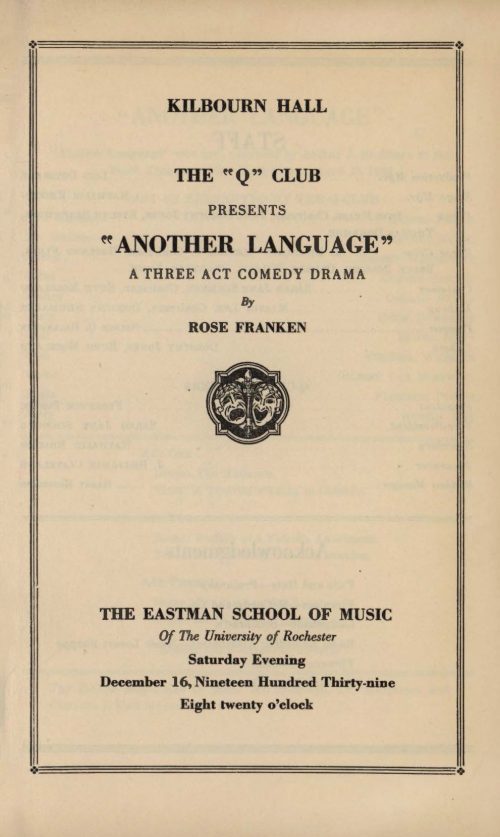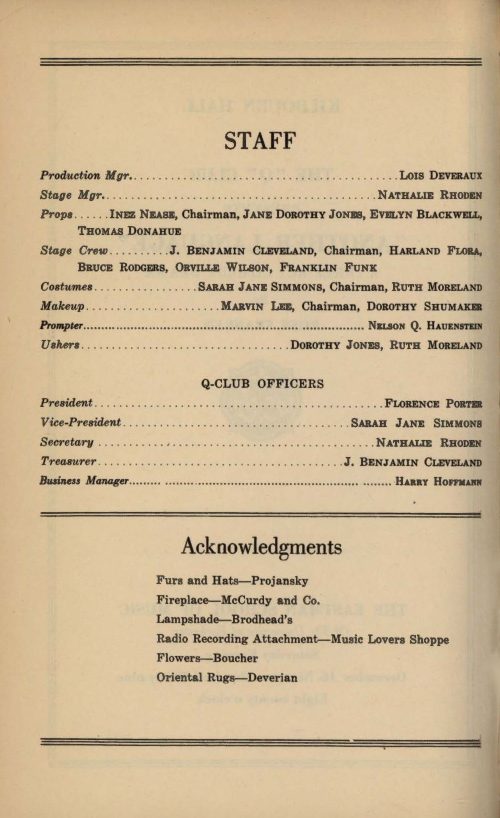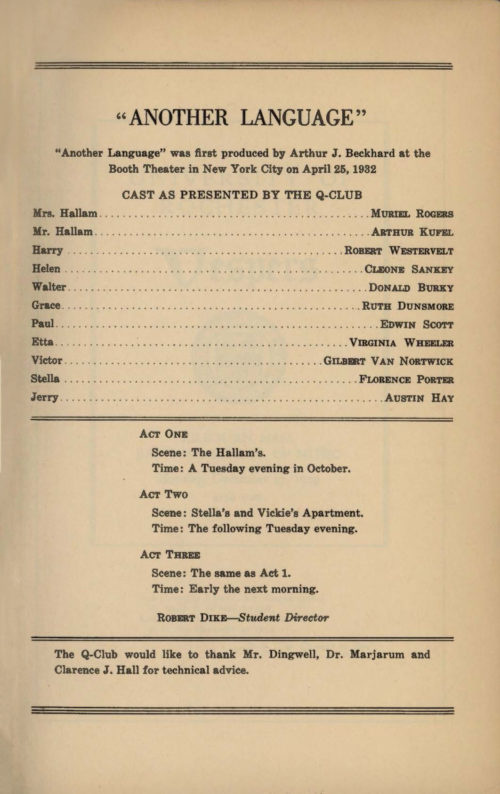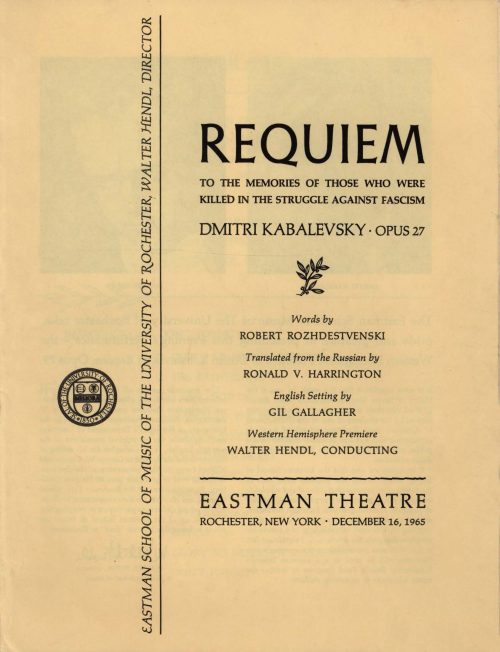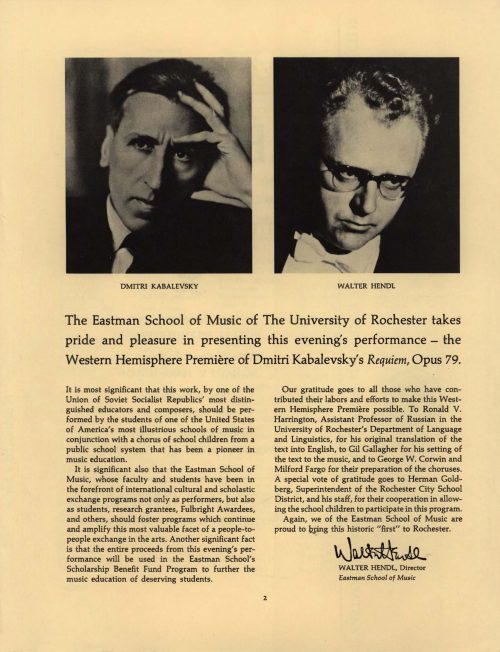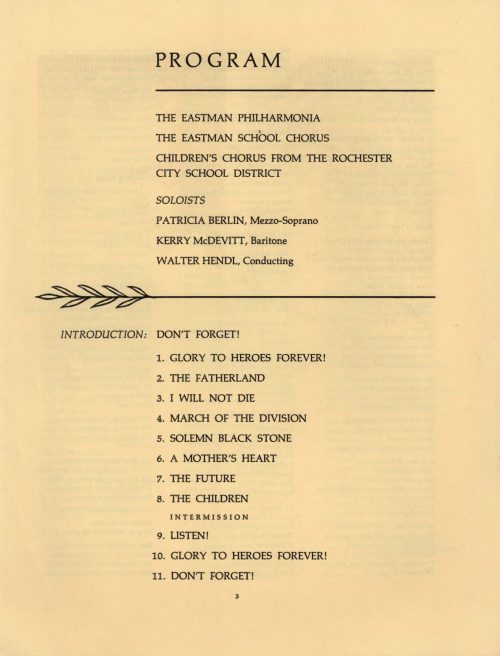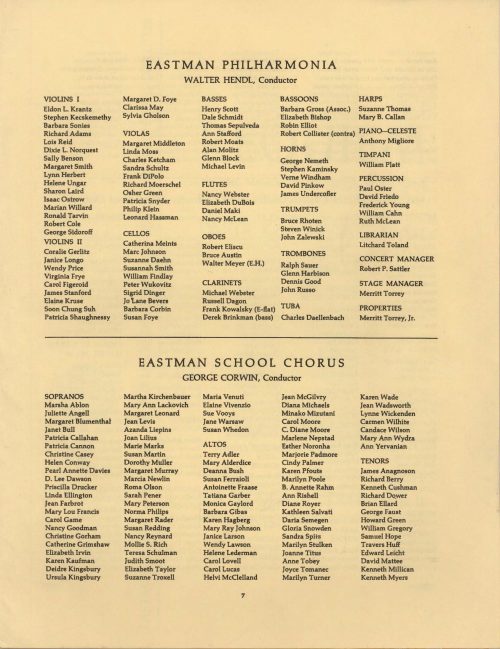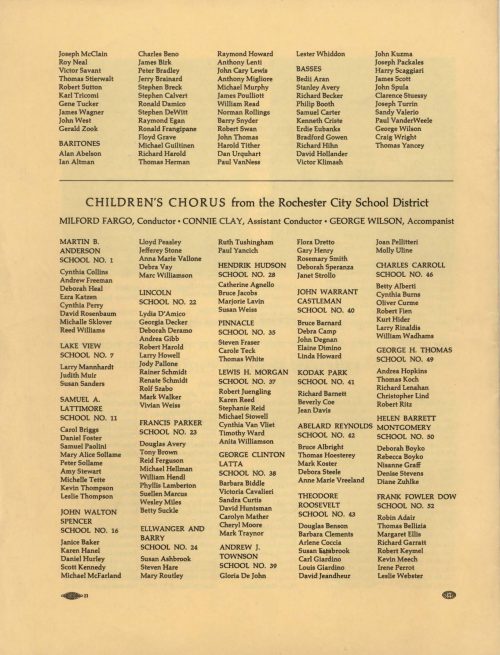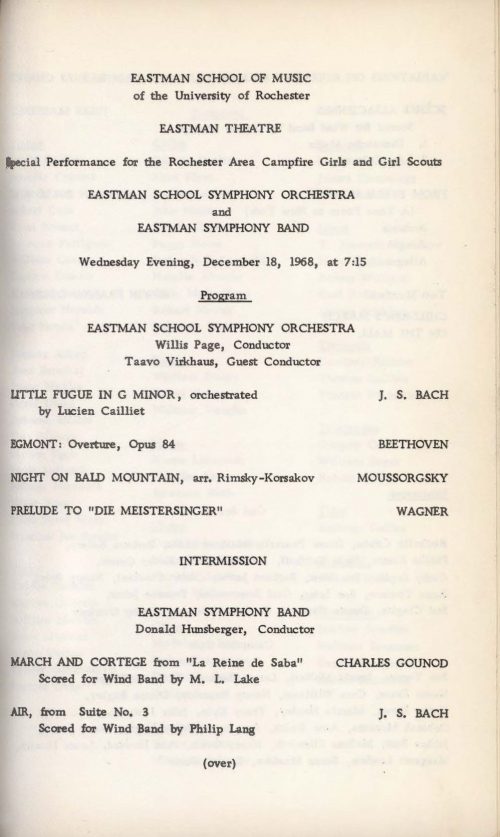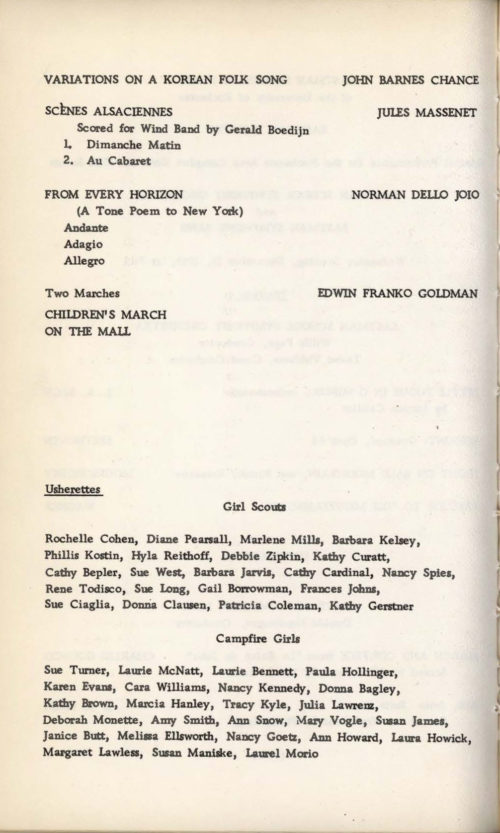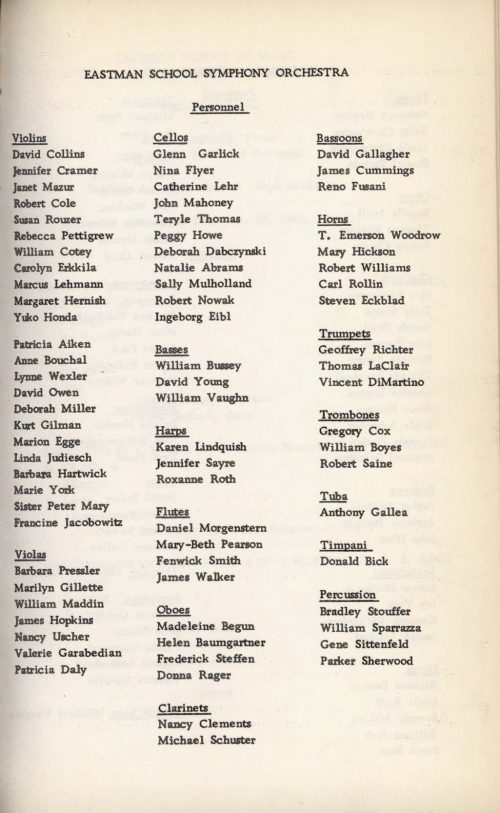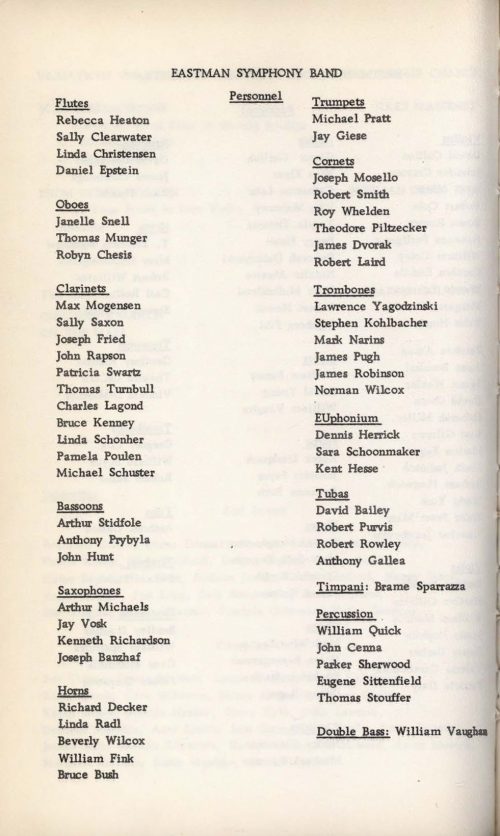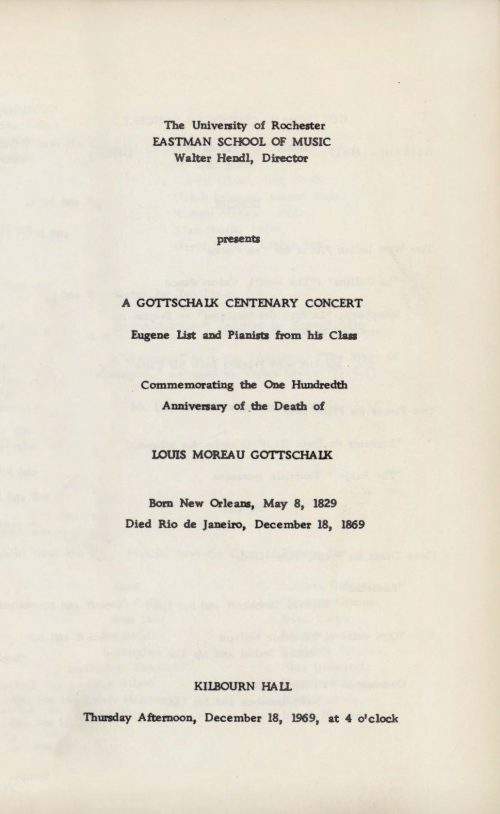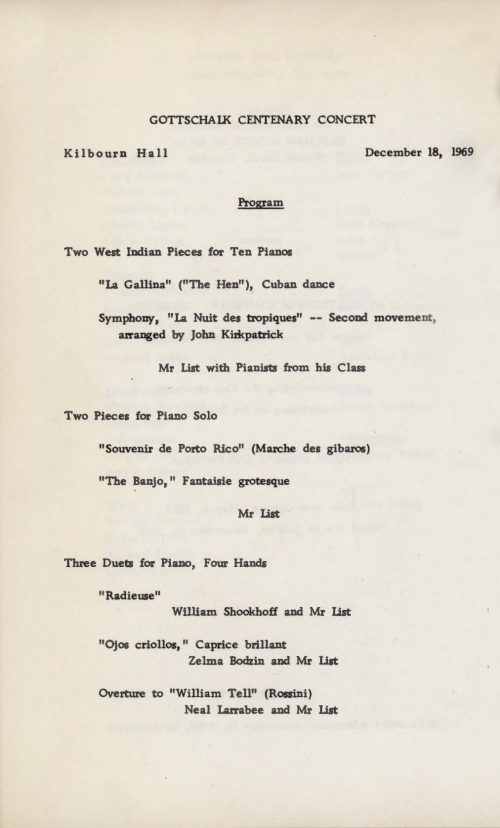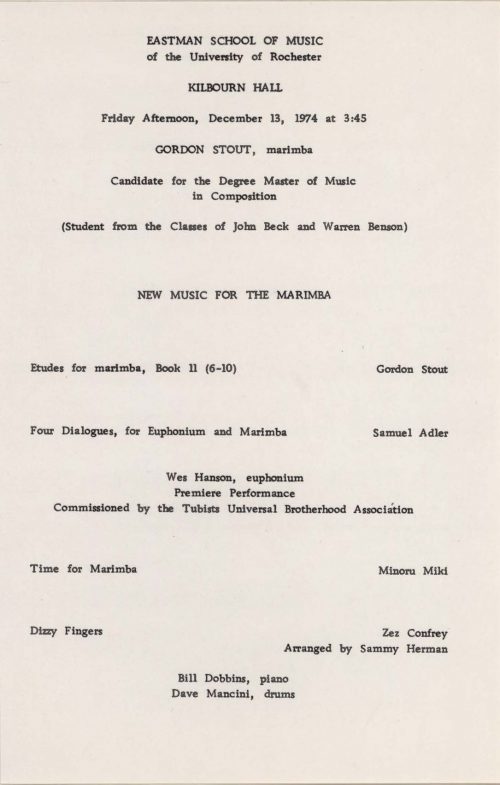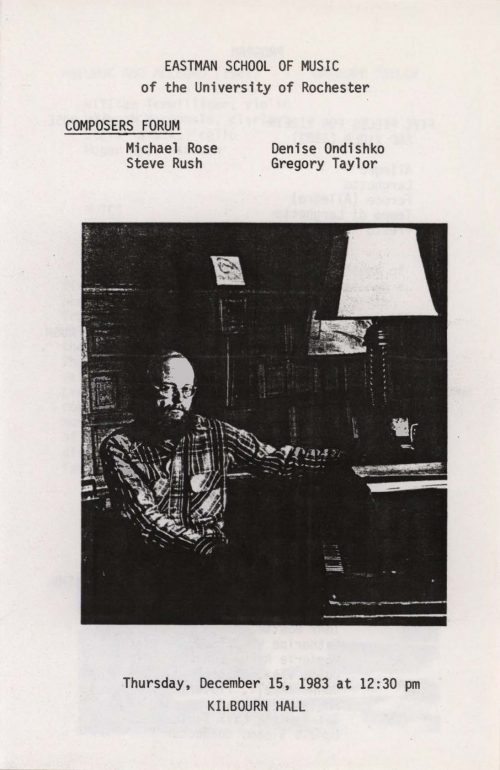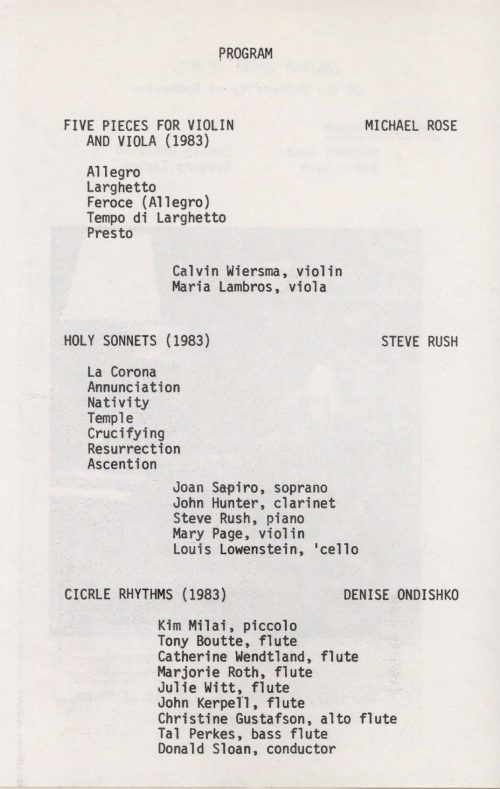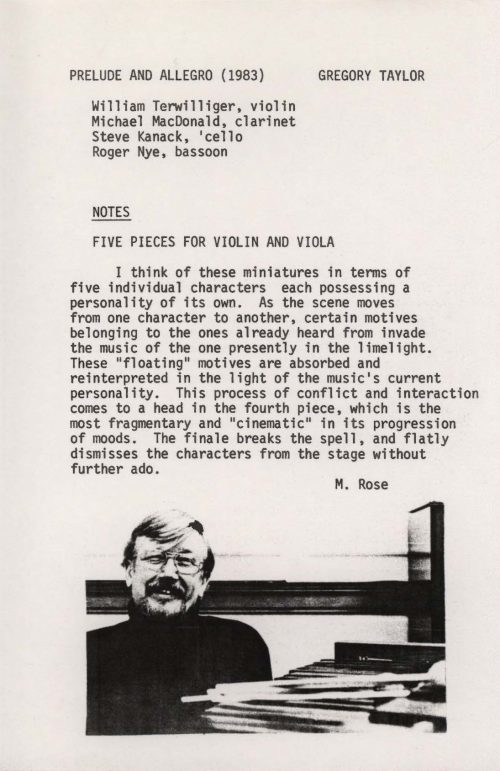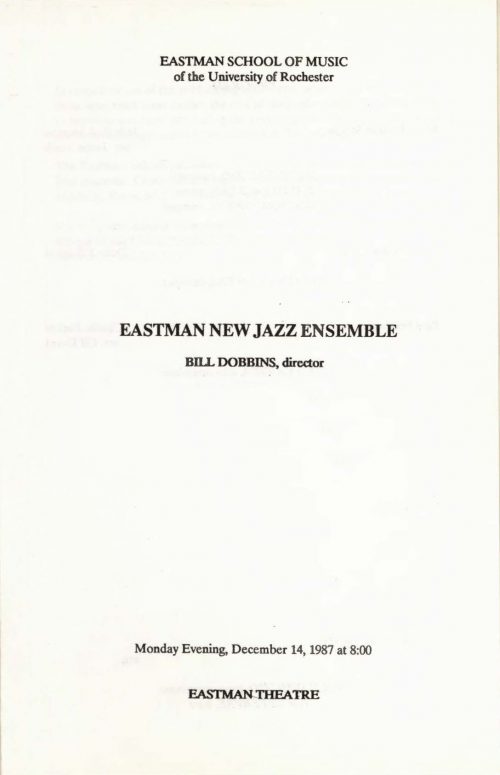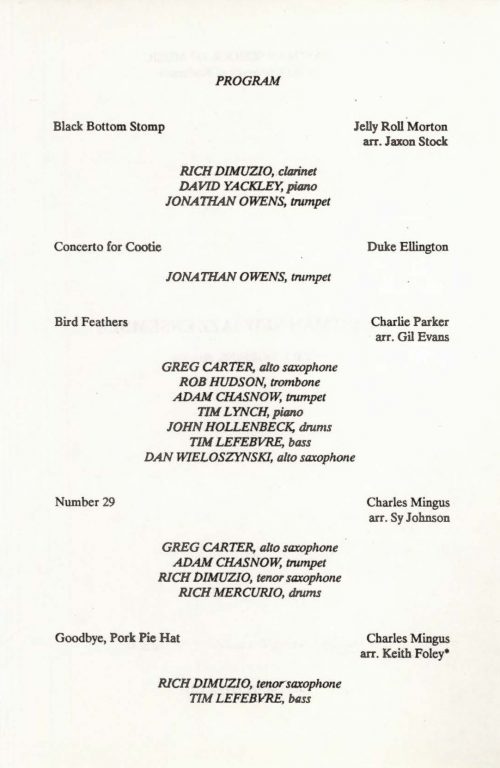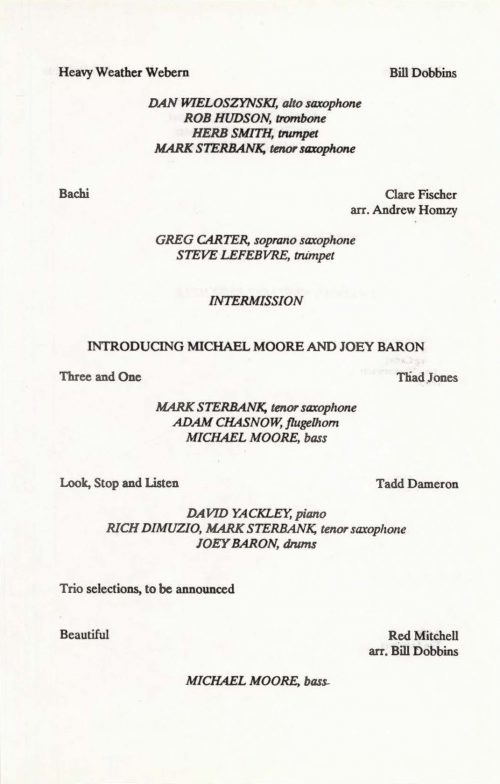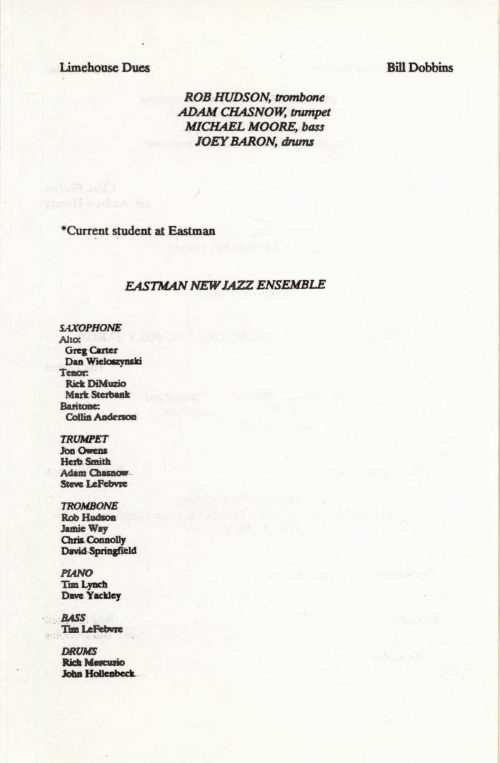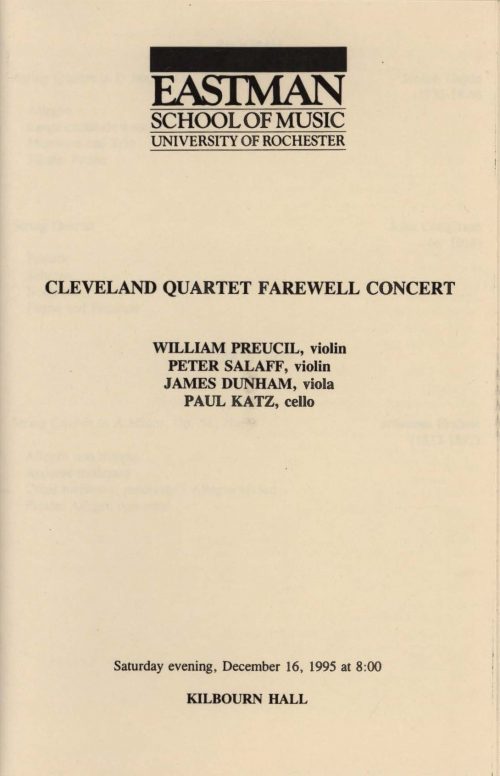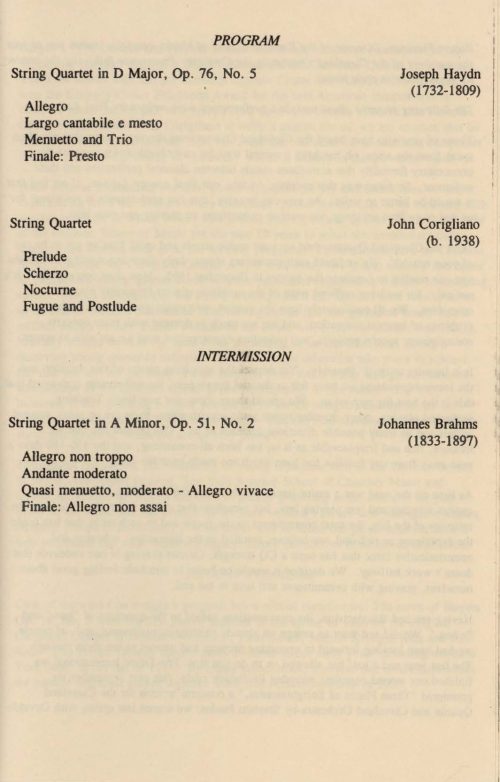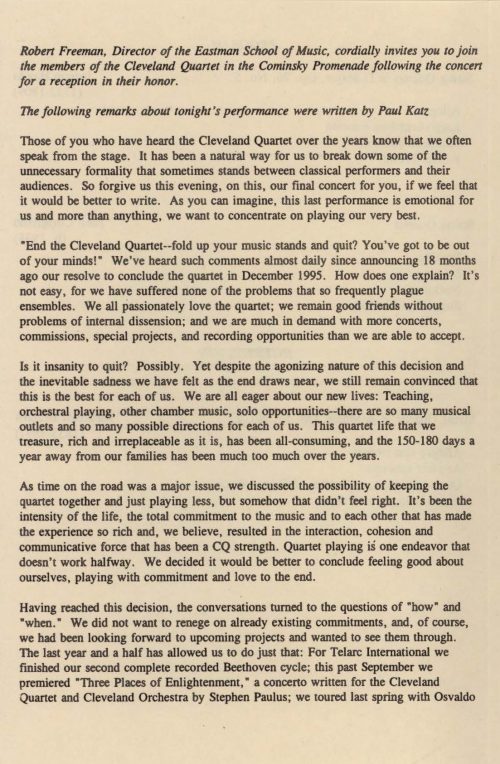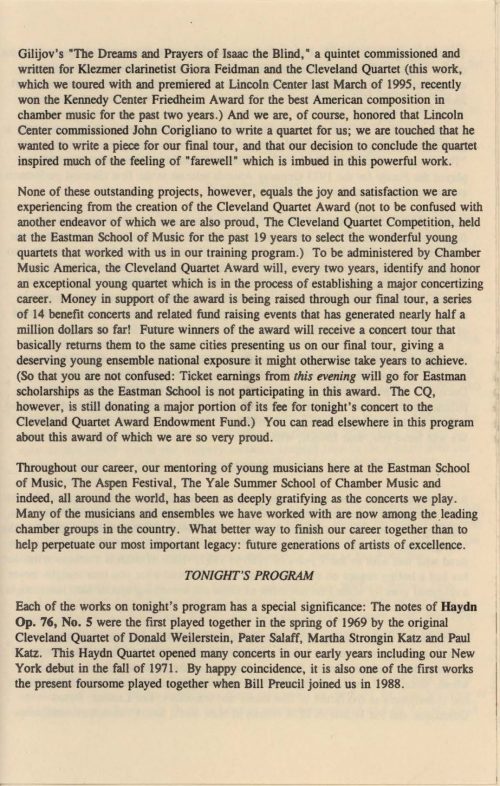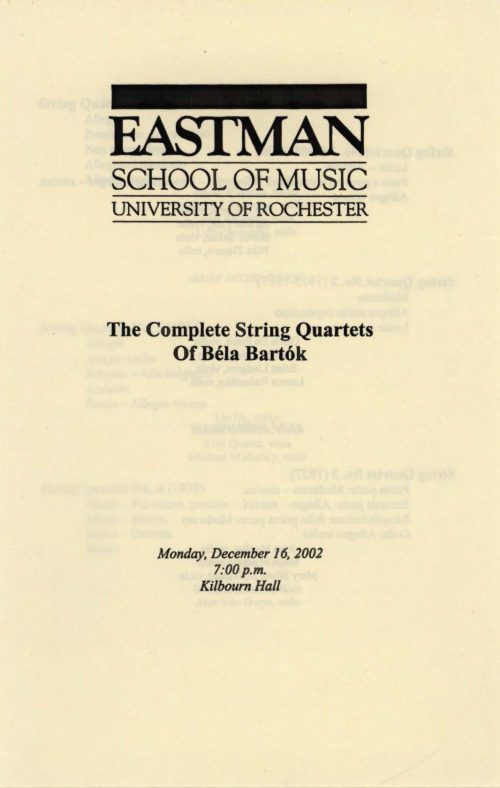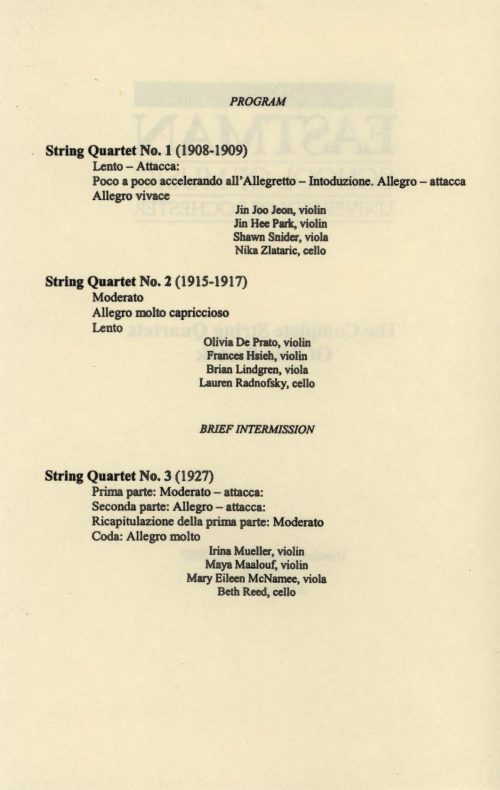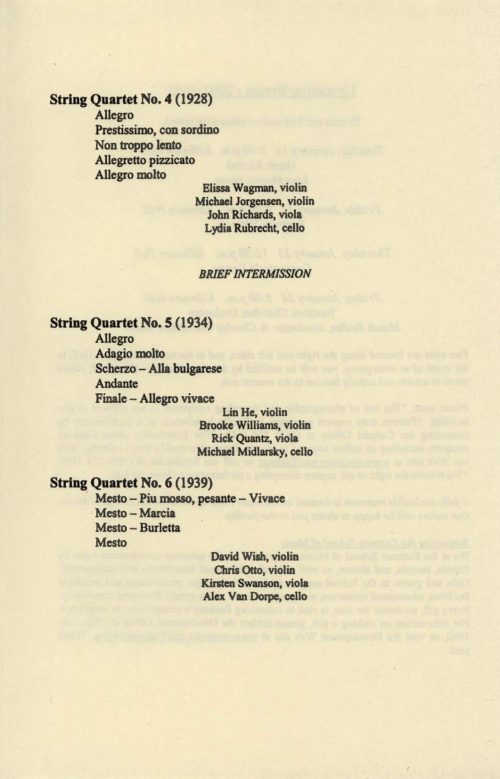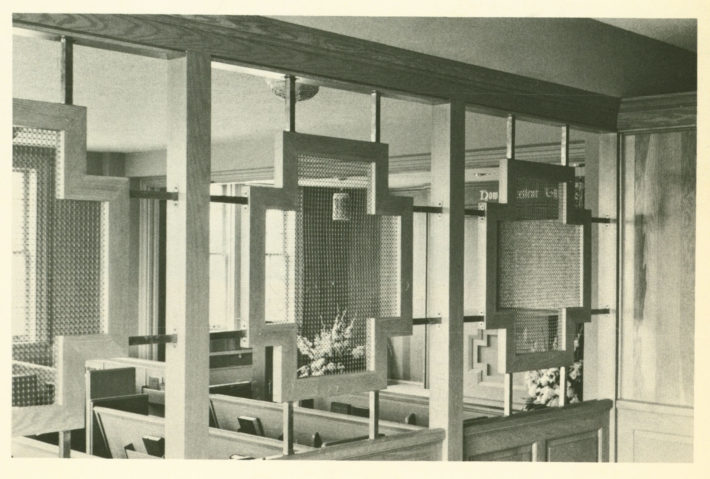Published on Dec 13th, 2021
1961: The Eastman Philharmonia on tour
Brussels, December 13, 1961
Goteborg, December 15, 1961
Uppsala, December 17, 1961
Athens, December 19, 1961
Sixty years ago this week, the members of the Eastman Philharmonia were continuing their landmark three-month tour. The days between December 13th and 19th found them in Belgium and Sweden, and then travelling on to Greece. The orchestra played four scheduled concerts during those days: in Brussels (December 13th), Goteborg (December 15th), Uppsala (December 17th), and Athens (December 19th).
The travel diary kept by bassoonist Richard Rodean records sightseeing at each juncture, including touring the grounds of the 1958 World’s Fair in Brussels, doing Christmas shopping in Goteborg and Stockholm, and also a memorable ride on the Stockholm subway when a group of orchestra members feared they had been stranded underground. (Not comprehending the system’s public service announcements in Swedish, they had unknowingly stayed on the train past its last scheduled stop, ending up at the distant terminus at which point the train reversed course for its return run.) When the orchestra members arrived in Uppsala, they were escorted by University of Uppsala students to the university library to view a special display of music and other manuscripts. Cultural amenities were on display in the orchestra members’ accommodations; some members were surprised at finding no private baths in their Stockholm hotel but instead, a communal steam bath. Travel between itinerary points was mostly by plane (Brussels to Goteborg; Goteborg to Stockholm; Stockholm to Milan) with bus trips from Stockholm to Uppsala and back; and from Milan to Athens. The flight from Brussels to Goteborg was not without drama when one of the engines suddenly cut out while the plane was over water. Mr. Rodean recorded seeing the propeller stop and then hearing an alarm sounding; the plane lost some altitude and the passengers were immediately advised to fasten their seatbelts. The flight continued without incident for the remaining two hours to Goteborg, but upon landing, orchestra members saw that the airport’s emergency equipment had been called out to the runway.
At the concert in Brussels, a number of university students in the audience began to sing along when the orchestra played as an encore John Philip Sousa’s The Stars and Stripes Forever. After the concert came the information that the march’s principal tune is a popular drinking song at the University in Brussels! The concert in Goteborg was less than satisfactory in that only a very small audience turned out, and local authorities had decided in advance that the event should be narrated by a master of ceremonies. The latter’s comments from the stage so displeased Dr. Hanson that he left the stage after conducting just one encore and refused to return, leaving the orchestra members in an awkward position. The concert in Uppsala was similarly disappointing in that only a small audience was present to hear the orchestra. Nevertheless, the Philharmonia’s program in Uppsala included a special encore performed in memory of the late Dag Hammarskjöld (1905-1961), U. N. Secretary-General whose native city was Uppsala, and who had died in a plane accident two months before the Eastman Philharmonia commenced the tour.
With the travel to Greece on December 18th, the tour’s itinerary now moved to warmer climes. The orchestra members would spend the next three weeks in cities in Southern Europe and the Middle East.
1970: Richard Strauss’s comic opera Die Schweigsame Frau
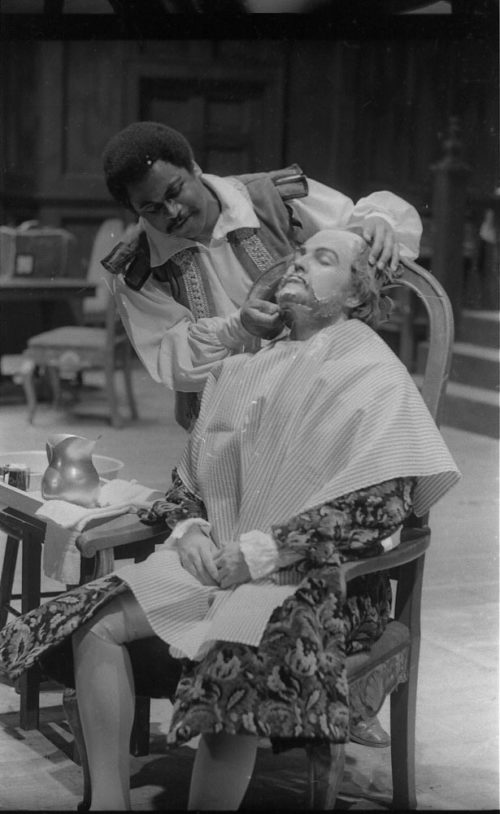
Last week Eastman Weekly promoted an Eastman Opera Theater milestone—the 1969 production of Francis Poulenc’s masterpiece Dialogues of the Carmelites, staged at Eastman just eleven years after the world premiere and eight years before the Met staging. One year later, or fifty-one years ago this week, on December 17 and 18, EOT scored yet another milestone with a production of Richard Strauss’ seldom performed Die Schweigsame Frau, the eleventh of Strauss’ sixteen operas, directed by Leonard Treash. Die Schweigsame Frau (The Silent Woman), is a comic opera in three acts with a libretto by Stefan Zweig (1881-1942) after the play Epicoene, or, The Silent Woman by Ben Jonson (1573?-1637). Previously, Mr. Treash had directed two other Strauss operas at Eastman, Arabella (1963) and Ariadne auf Naxos (1966). Later on, after Richard Pearlman’s appointment as dramatic director, EOT would stage Capriccio (1976) and a new production of Ariadne auf Naxos (1985).
Die Schweigsame Frau was composed in 1933-34 and was premiered in Dresden in June, 1935. The circumstances of the opera’s origins, and its performance history, have been described documented by Strauss’ biographers. All of Strauss’ previous operas, with the exception of Intermezzo, had been based on libretti by Hugo von Hofmannsthal (1874-1929); after Hofmannthal’s death, Strauss reached out to the renowned Austrian writer Stefan Zweig (1881-1942) for a libretto for a new opera. Zweig recounted in his autobiography that Strauss had specifically cited Ben Jonson’s play The Silent Woman. By this time Zweig had successfully adapted Jonson’s play Volpone for the German stage, enhancing his own reputation while contributing to renewed attention to the long-dead playwright and contemporary of Shakespeare. The libretto that resulted, embodying Jonson’s social satire set in 1600s London, would come to represent the sole collaboration between Strauss and Zweig owing to circumstances beyond the control of either. The opera’s plot surrounds Lord Morosus, a war-damaged naval admiral who lives withdrawn from social contact and longing only for peace and quiet. His barber Pancreas Cutbeard, a daily visitor, suggests to him that he seek marriage with a younger, quiet woman. Lord Morosus is drawn to the idea, and what eventually emerges, when boiled down to the barest essentials, is the time-honored dramatic material of an aged bachelor entering into a relationship with a younger woman, only then to suffer for his imprudence. The opera ends with Lord Morosus having made a narrow escape and finding his sought-after peace.
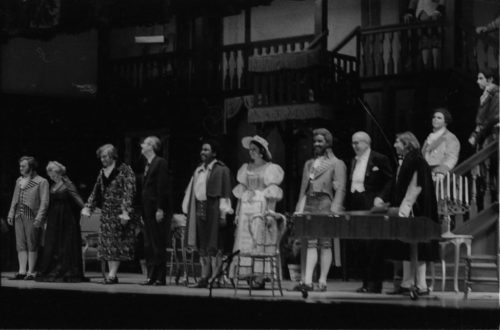
Shots from the EOT production of Die Schweigsame Frau. The production was double-cast.
► Photos by Louis Ouzer: R1063-7, R1066-29, R1064-2, R1064-16, R1064-18, R1065-4, R1065-5, R1065-6, R1065-8, R1065-10, R1065-34.
The premiere production was threatened when the leadership of the Nazi Party objected to the opera on grounds of its librettist, who was a Jew, but the favor that Strauss had initially enjoyed with the Third Reich was sufficient to win Hitler’s authorization of the premiere performance. Nevertheless, Nazi disapproval won out; the production was halted after only four performances, and the opera was banned altogether. Strauss thereupon resigned his position as president of the Reichsmusikkammer, the state music bureau that Nazi henchman Joseph Goebbels had founded as part of the Third Reich’s Chamber of Culture in promotion of music consistent with the Nazi viewpoint. Die Schweigsame Frau was not performed again until after World War II, when it was revived in Dresden (1946) and was also staged in other German opera houses, including the Bayerische Staatsoper (1947). The British premiere was staged at the Royal Opera House in 1961. The American premiere was staged by New York City Opera (1958), and in later decades the opera was staged by Santa Fe Opera (1987, 1991). Research indicates that Eastman Opera Theater’s 1970 staging was only the second American production this opera has enjoyed. (Local press reporting promoted the production as such; wider promotion of the Eastman production was published in the pages of Opera News.) Similar to the sparing performance history, this opera has to date only a limited discography; the commercial recordings number no more than one half-dozen. Significantly, both performances in the 1970 Eastman Opera Theater 1970 production were captured on analog tape and preserved in the Eastman Audio Archive.
With respect to the music of Die Schweigsame Frau, several published reviews point to a consensus that this opera does not represent Richard Strauss at the height of his inventiveness or creative power. It remains for music-lovers and opera-lovers to continue to put such a viewpoint to the test and to decide for themselves. As we continue to celebrate the Eastman Century, we at the Eastman School of Music are indebted to Eastman Opera Theater for affording us such opportunities. Eastman Opera Theater had once again demonstrated creativity and enterprise with a bold repertory choice.
1974: Convocation in honor of Golda Meir
One of the most illustrious gatherings ever assembled in the Eastman Theater took place on December 16th, 1974, during a formal visit by Her Excellency Golda Meir, former Prime Minister of the State of Israel. The former Prime Minister was present at the University for the establishment of the Philip S. Bernstein Professorship in Jewish Studies. The convocation had been scheduled so as to recognize her and to confer on her an honorary degree. Eastman musicians were present to perform in her honor. The Eastman Wind Ensemble (Donald Hunsberger, conductor) fulfilled the ceremonial function of playing the national anthems of both the State of Israel and the USA, and at the conclusion of the gathering, the EWE performed Howard Hanson’s Chorale and Alleluia. Immediately before the conferral of the honorary degree, Professors Zvi Zeitlin and Barry Snyder performed “Nigun” from the “Baal-Shem Suite” by Ernest Bloch.
The late Golda Meir (1898-1978), Israeli politician, was elected to the Knesset in 1949 and served continuously until 1974. She served in the Israeli cabinet as Minister of Labor (1946-56) and as Foreign Minister (1956-66), and became Israel’s first woman Prime Minister in 1969. She left office in June, 1974 and was succeeded by Yitzhak Rabin (1922-1995).

